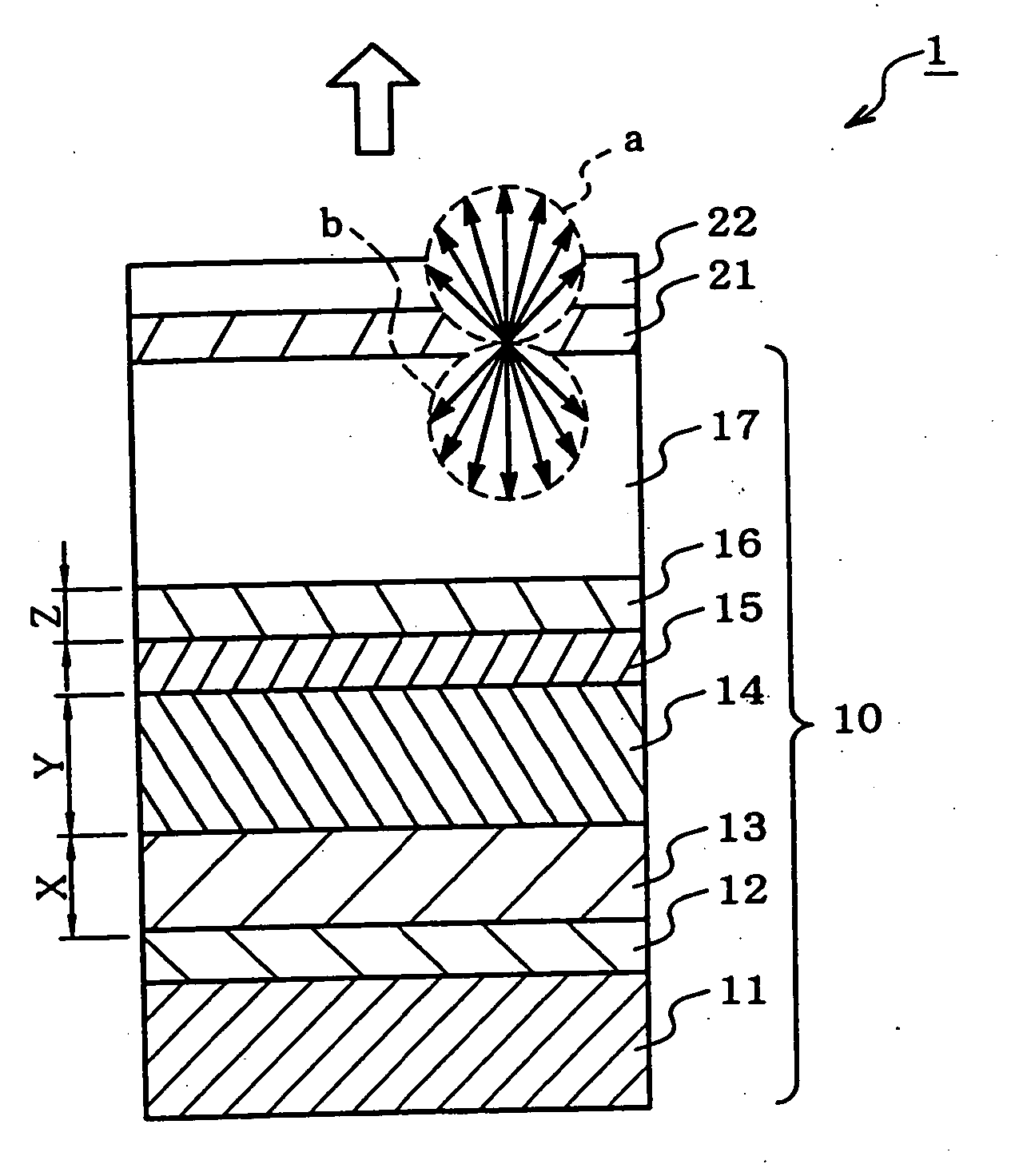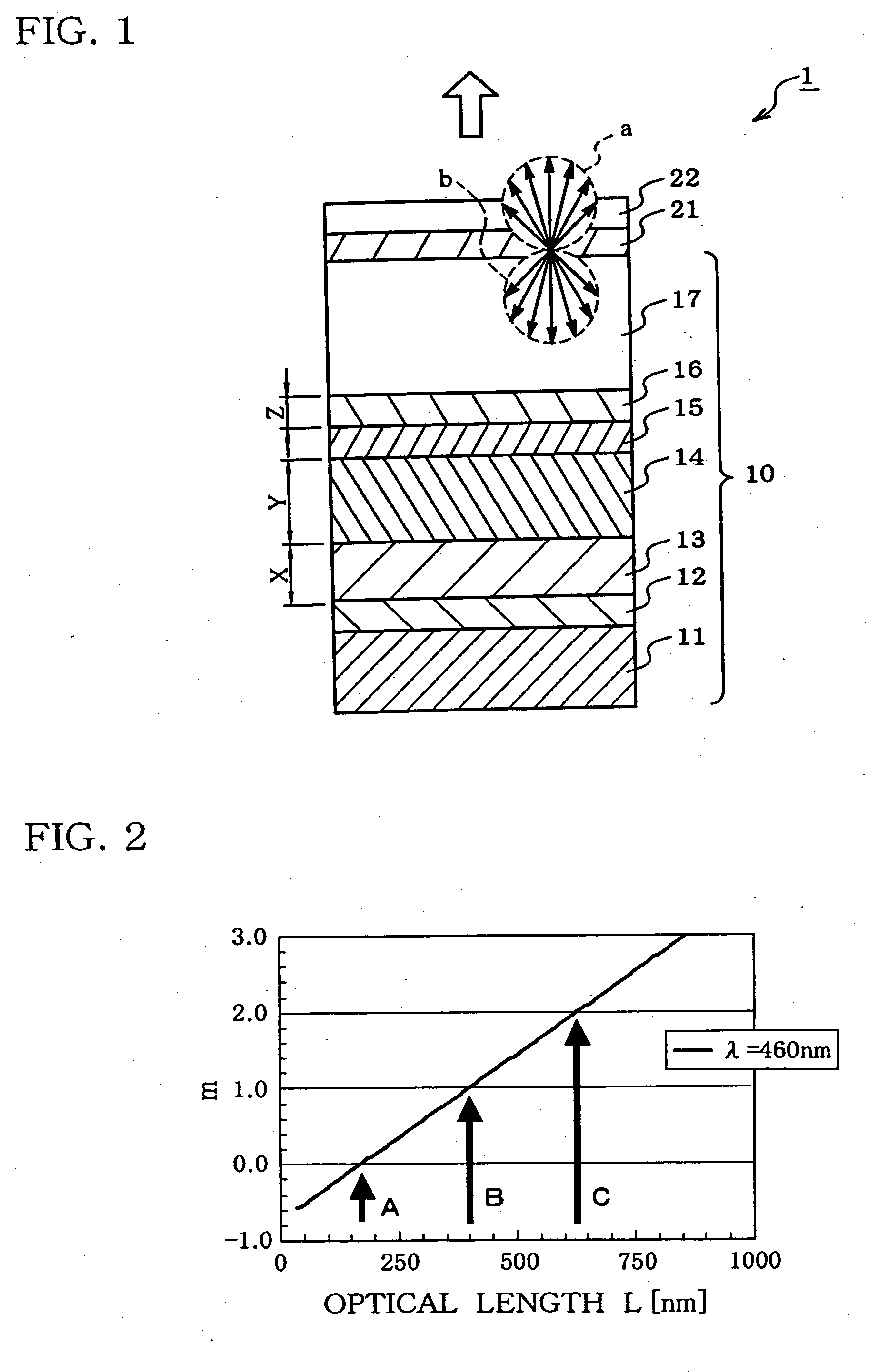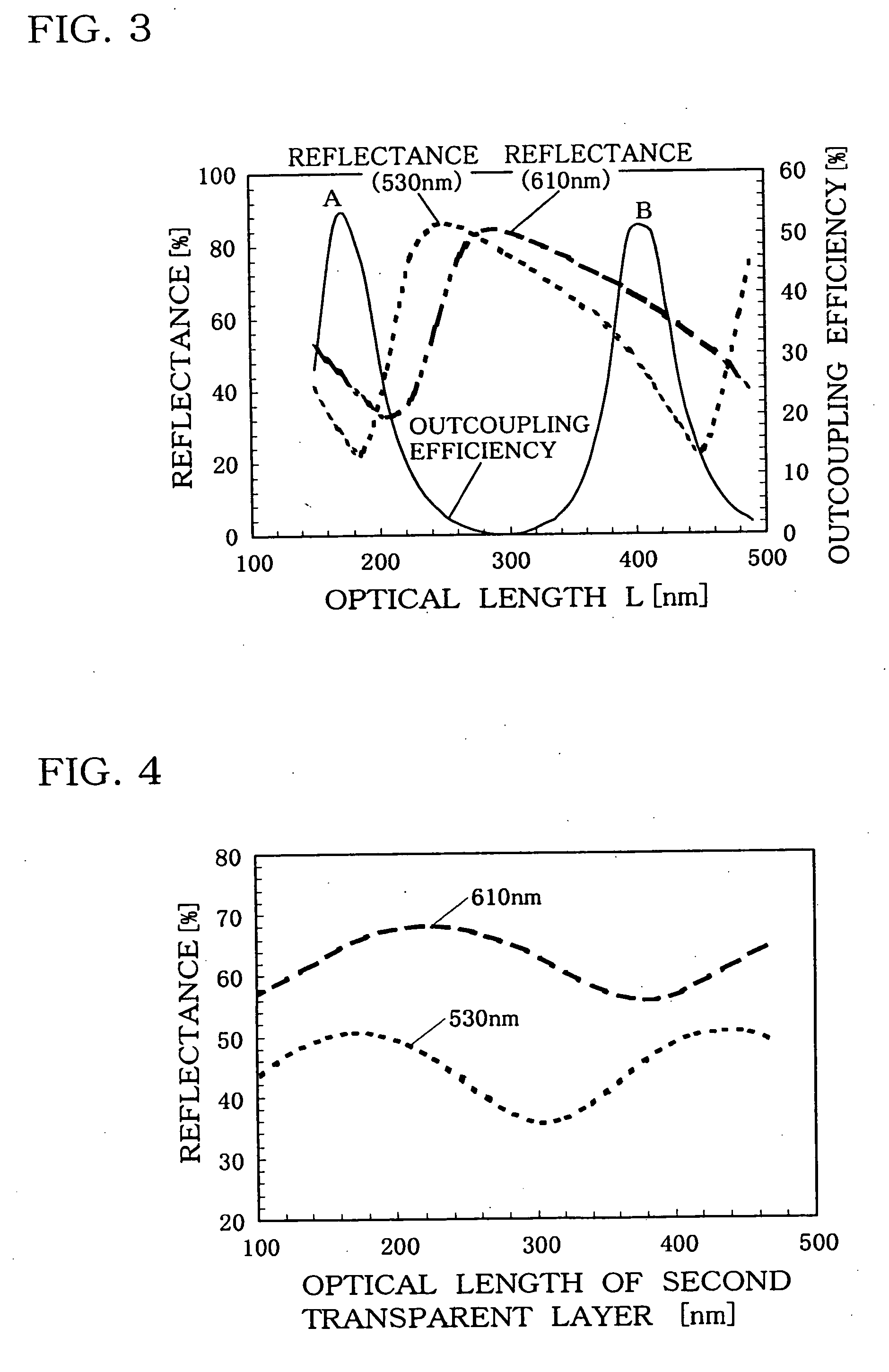Color emitting device
a technology of emitting device and emitting device, which is applied in the direction of static indicating device, organic semiconductor device, instrument, etc., can solve the problems of low luminance of emitting device and impaired emission efficiency of organic el device, and achieve the effect of improving the luminance of the device itsel
- Summary
- Abstract
- Description
- Claims
- Application Information
AI Technical Summary
Benefits of technology
Problems solved by technology
Method used
Image
Examples
first embodiment
[0104]FIG. 5 is a diagram showing a configuration of a color emitting device according to one embodiment of the invention.
[0105] The first embodiment is an example of a full color emitting device in which pixels respectively emitting light of blue, green, red of the three primary colors are separately arranged in a plane by using the technology according to the invention.
[0106] In a color emitting device 2, a blue pixel 101, a green pixel 102, and a red pixel 103 are formed on the supporting substrate 11. The arrow indicates the light-outcoupling direction.
[0107] The blue pixel 101 includes a first-organic EL device 41 and a blue color filter 51. The first organic EL device 41 has a configuration in which the first reflecting section 12, the organic emitting layer 14, the second reflecting section 15, the second transparent layer 16, and the gas barrier layer 17 are stacked in that order.
[0108] The green pixel 102 includes a second organic EL device 42 and a green color filter 5...
second embodiment
[0120] A second embodiment is another example of a full color emitting device in which emitting pixels respectively emitting light of blue, green, red of the three primary colors are separately arranged in a plane.
[0121] A full color emitting device 3 has the same configuration as the full color emitting device according to the first embodiment except that the green pixel 102 includes a green conversion member 32 formed between the second organic EL device 42 and the green color filter 52, and the first transparent layer 13 is formed instead of the third transparent layer 13′. The members of the full color emitting device 3 are the same as the corresponding members shown in FIG. 2.
[0122] When the reflectance for the peak wavelength of light emitted from the green conversion member 32 and the reflectance for the peak wavelength of light emitted from the red conversion member 33 can be set at 50% or more, a configuration may be employed in which the green conversion member 33 and th...
example 1
1. Fabrication of Organic EL Device Substrate
[0279] Aluminum was deposited on a supporting substrate (75×25×1.1 mm) (0A2 glass manufactured by Nippon Electric Glass Co., Ltd.) by sputtering to a thickness of 300 nm. The aluminum film functions as a lower electrode and a first reflecting section.
[0280] ITO was deposited on the aluminum film by sputtering to a thickness of 130 nm. The ITO film functions as an electrode for injecting holes into an organic emitting layer, and also functions as a first transparent layer.
[0281] The substrate on which the lower electrode was formed was subjected to ultrasonic cleaning for five minutes in isopropyl alcohol, and then subjected to UV ozone cleaning for 30 minutes. The cleaned substrate was installed in a substrate holder of a vacuum deposition system.
[0282] A molybdenum heating boat was respectively charged in advance with a compound (HI) (hereinafter abbreviated as “HI film”) as a hole-injecting material, a compound (HT) (hereinafter ab...
PUM
 Login to View More
Login to View More Abstract
Description
Claims
Application Information
 Login to View More
Login to View More - R&D
- Intellectual Property
- Life Sciences
- Materials
- Tech Scout
- Unparalleled Data Quality
- Higher Quality Content
- 60% Fewer Hallucinations
Browse by: Latest US Patents, China's latest patents, Technical Efficacy Thesaurus, Application Domain, Technology Topic, Popular Technical Reports.
© 2025 PatSnap. All rights reserved.Legal|Privacy policy|Modern Slavery Act Transparency Statement|Sitemap|About US| Contact US: help@patsnap.com



